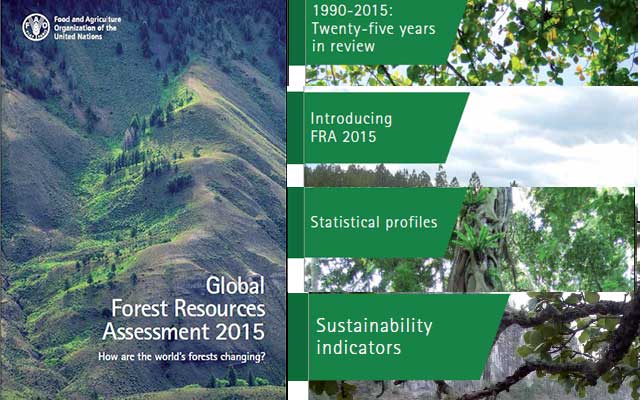Over the past quarter century net global deforestation has slowed down by more than 50 percent. Food and Agriculture Organization of the United Nations (FAO) has stated this in a report published recently.
Global Forest Resources Assessment 2015, the “most comprehensive forest review” of the FAO to date, states that 129 million hectares of forest have been lost since 1990.
But an increasing amount of forest areas have come under protection as more countries are improving forest management.
The FAO study covers 234 countries and territories and has been presented at World Forestry Congress in Durban, South Africa.
FAO Director-General José Graziano da Silva noted that at present national forest inventories cover 81 percent of global forest area, which is a substantial increase over the past 10 years and added that improved information can form good policy.
“The direction of change is positive, but we need to do better,” the FAO Director-General said. “We will not succeed in reducing the impact of climate change and promoting sustainable development if we do not preserve our forests and sustainably use the many resources they offer us.”
Highlights of the FAO report:
# In 1990 forests covered 31.6 percent of land, that is 4,128 million hectares
# In 2015, forests cover 30.6 percent of land, that is about 3,999 million hectares (Source: FRA)
# Net annual rate of forest loss has slowed from 0.18 percent in the early Nineties to 0.08 percent during the period 2010-2015
# Ninety-three percent of world’s forests are natural, including primary forest with minimal human disturbances, and naturally regenerated secondary forest
# Planted forests account for 7 percent of the world’s overall forest area
# Since 1990 planted forests have increased by more than 110 million hectares
# Africa and South America showed highest net annual loss of forests in 2010-2015, with 2.8 and 2 million hectares respectively
# Deforestation rates of Africa and South America are slower than preceding five-year period
# Tropics were deforestation hotspots since 1990
# Net forest area has increased in temperate countries while boreal and subtropical regions have maintained status quo
# Population growth has reduced forest area per person in tropics, subtropics and other climatic regions except temperate
# Natural forest on global decline
# Planted forest on the rise
# Planted forests mostly publicly owned, but individual and community owned forests have increased
# Management of forests — planning, knowledge sharing, legislation, policies — has improved dramatically over the last 25 years
# Despite conservation efforts, threat of biodiversity loss persists and is likely to continue with deforestation, forest degradation, pollution and climate change
# Only 13 percent (524 million hectares) of world’s forests currently designated for biodiversity conservation
# Largest biodiversity conservation areas in Brazil and the United States
# Africa reported the highest annual increase in the area of forest for conservation over the last five years
# Europe, North and Central American and North America reported lowest annual increase in forest are compared with previous reporting periods
# Asia reported lower percentage of increase from previous decade (2000-2010) but higher than the increase reported in the 1990s.
# Total carbon emissions from forests decreased by more than 25 percent between 2001 and 2015
Ajith Kumar S
editor@greentechlead.com


